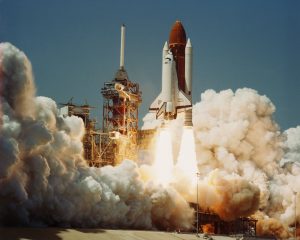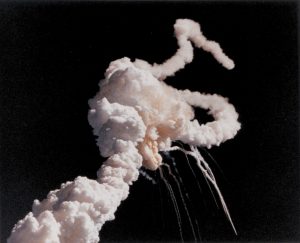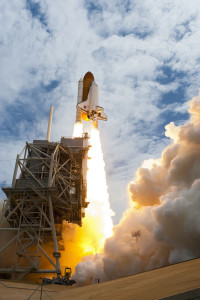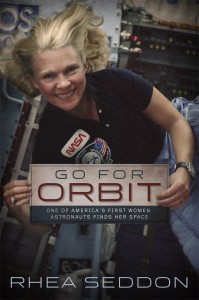Flying after the Challenger
The Reality of Launch
Nothing would ever compare to my first Shuttle launch: the noise, the vibration, the acceleration, and those crushing g-forces…and their sudden surrender to the onset of weightlessness. Having watched my friends’ and my husband’s fiery baptisms, my anxiety for my first launch was about getting into space at last, as well as the pressure to perform to the best of my ability.
That perspective changed after January 28, 1986. As we all witnessed the Challenger accident and its aftermath – both public and private, nothing would ever be the same. When I first sat atop the rocket, I understood that my life might be snuffed out in an instant; yet, I didn’t consider much beyond that fact.
I didn’t realize that when astronauts die, it is a public, national tragedy.
My days at Cape Canaveral participating in the recovery of the Shuttle’s and the crewmembers’ remains gave me way too much time to ponder and contemplate. I witnessed families shocked, horrified, hounded by the press, coping, and finally bereft and devastated. I saw the crewmembers’ children unable to comprehend what had happened. I imagined my husband – as strong and independent as he was – having to explain to our young son that Mommy wouldn’t be back and raising a motherless child.
The chance of a total loss of a mission? At best, just wild guesses. 1 in 25?, 1 in 100?, 1 in 1000?
The risk could not be quantified. There were too many parts that could fail, too many interactions of vehicle, weather, crew operations, and management decisions. Everyone knew there lurked many “unknown unknowns,” and the leakage of gas through the casing of the solid rocket boosters had been one of them. Before Challenger, we were in a learning mode about what could happen. After Challenger…well…we were still in a learning mode.
All the astronauts were kept busy for the next year helping the Challenger families, working with multiple groups and commissions to determine what had happened, and then planning what had to be accomplished for a return to flight. In moments of quiet with their families, astronauts had to reassess whether they were willing to take the risk of flying again. Some moved on – and some of us recommitted.
My husband commanded a mission shortly after we started flying again following the Challenger investigation and implementation of fixes to the Shuttle and boosters. We were more realistic about the possibilities. Saying goodbye to him as he left for his launch was more poignant – especially since I was pregnant with our second son.
I did much more personal planning for my second launch. I had an updated will, a file with important papers, and a list of phone numbers of close friends and relatives. There were more difficult things, too: a plot in the family cemetery, discussion on how to raise the children. As the morning of my launch drew near, I took strength and comfort from words written on my checklist of emergency procedures – words written by Michael Joncas in the Methodist hymnal:
And He will raise you up on eagle’s wings,
Bear you on the breath of dawn,
Make you shine like the sun,
And hold you in the palm of His hand.
We’d love to add you to our email list.
If you have not yet signed up, please do so by clicking here.






You: “My husband commanded a mission shortly after we started flying again following the Challenger investigation and implementation of fixes to the Shuttle and boosters. ” That was STS-27, which suffered the most damage to a shuttle on launch and still managed to come back. Because of the severity of damage, yet the orbiter survived, it once again lulled people into a “normalization of deviance,” that the TPS was stronger than it actually was. If it wasn’t for an antenna plate, that flight would have suffered a burn-through and the shuttle program ended right there.
Once again you manage an wonderful and inspiring story. All of you are so brave. I am truly humbled.
The best assessment of risk by an astronaut that I have heard. One in something-who knows? Thanks for sharing.